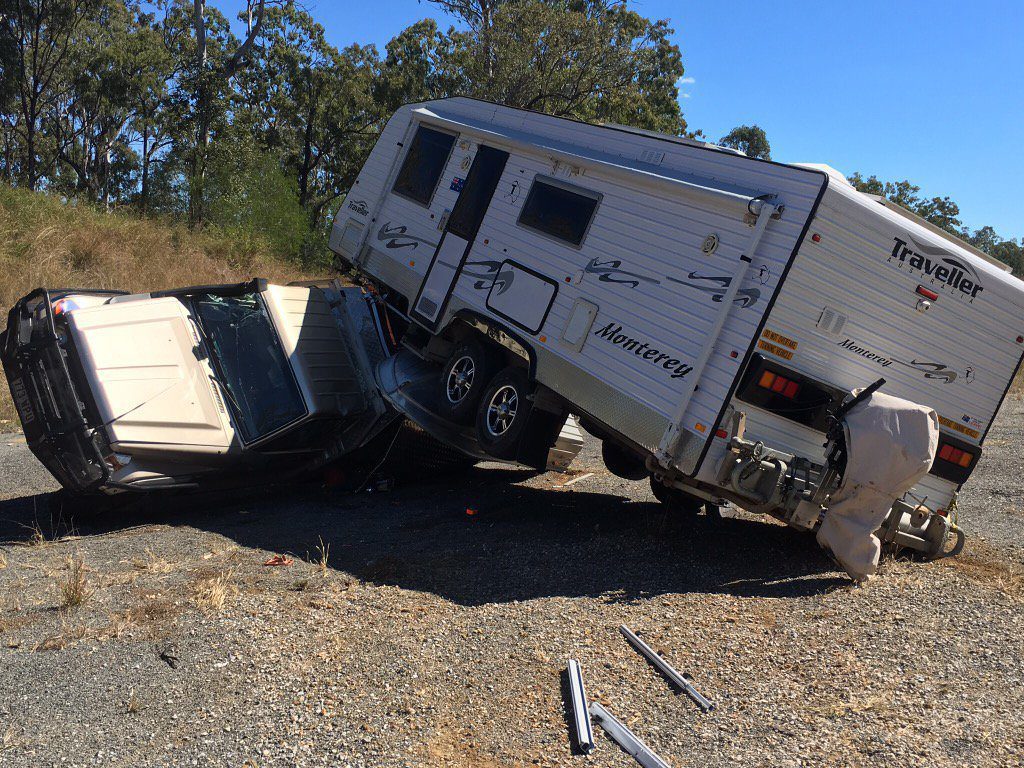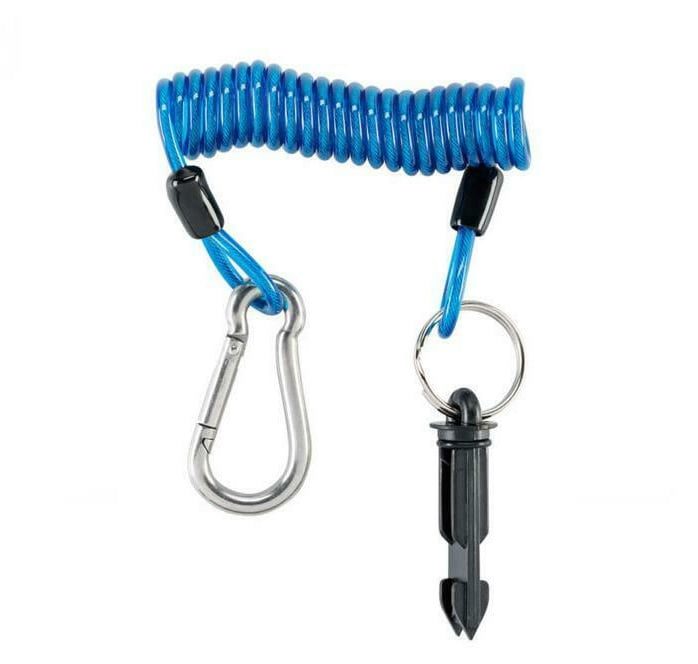Lanyard Breakaway Switch Safety Alert
Breakaway Safety Lanyard Switch general owner inspection alert for Caravans and trailers over 2000kg only.
Safety switch lanyards are approximately 120cm long whilst safety chains are 64cm long.
Surprisingly, most breakaway lanyards are installed incorrectly, it is impossible to disengage the breakaway pin, as intended.
This is a worldwide problem that requires exposure by Manufacturers and EOM alike.
Do manufacturers perfectly matches breakaway lanyards with safety chains?
A quick check of your caravan breakaway lanyard will shock you.
How the Breakaway Safety Lanyard Switch is Used
When the pin is pulled, safety chains are approaching full extension of the safety chains.
Further, this test can be manually completed by attaching your chains to the tow bar and pushing your rig backwards on the jockey wheel.
Brakes not Engaged
In extreme circumstances, electric brakes are not engaged when the caravan or trailer becomes detached from the tow vehicle.
The minimum period for an electric brake system application is 15 minutes.
Couplemate recommends the following inspections by owners and inspection stations.
- Firstly, check the lanyard is shorter than the caravan safety chains.
- Secondly, ensure breakaway switches are affected by water ingress, thereby causing failure when the pin is detached.
- Thirdly, pull the pin on your breakaway before every journey to test the current flow to the electric brakes. You should hear your magnets engage.
Electric brake magnets make an audible sound when engaging. As a result of not hearing your magnets engage, take your rig to your service centre for investigation.
CM702-Breakaway Instruction-Sheet
ADR38 Towing Regulations (Trailers up to 4.5t)
4.4. Every trailer having a ‘Gross Trailer Mass’ over 2 tonnes must be equipped with an efficient ‘Emergency Brake System’ which will cause the immediate automatic application of its ‘Brakes’ in the event of the trailer accidentally becoming disconnected from the drawing vehicle. ‘Brakes’ so applied must remain applied for at least 15 minutes.
Interpretation
Many breakaway switch manufacturers interpret the above legislation as, when the trailer and safety chains detach from the tow vehicle, the brakes are applied.
If the trailer and vehicle are totally separated, it is then too late to stabilise the towed vehicle. The brakes will not effectively stop the towed vehicle and the likely result is the towed vehicle will flip causing significant damage and loss of life.
The correct reading of the legislation is if the trailer becomes detached, the towing chains will limit the likely damage. Further, the breakaway pin will be pulled and engage the 12v supply to the electric brakes for a period of no less than 15 minutes.
Therefore, the lanyard must be shortened when fitted to ensure the pin is pulled when the safety chains are at full length,
Lanyard Coil Breakaway Switches
We recommend coil breakaway switches be adjusted correctly. Although they appear high tech, this type of connection cannot be adjusted to pull the breakaway pin in an emergency.
For example, with the chains at full stretch in an emergency situation, this type of coil lanyard cannot be pulled, therefore, cannot engage trailer brakes.
Lanyards require correct installation and inspection at every service by a caravan dealer.
Breakaway Pins
Breakaway pins are subject to UV degradation. Replace the breakaway switch once the pin brakes due to age.
Copper Contacts
Install breakaway switches facing forward for the pin to pull forcefully during detachment.
Inspect the inside of the switch contacts for signs of dirt that causes failure during testing.
A breakaway switch with a rubber boot cover is available for purchase here:
A breakaway switch may have to deliver 12.8 Amps to four magnets on a tandem rig. If the contacts are dirty, excessive heat is in the cable.
Lanyard Breakaway Test Failure
With the chains connected and the jockey wheel on the ground, push the caravan so that the safety chains are at full stretch.
If the pin fails to pull, measure the slack lanyard and shorten it. If the breakaway switch fails after disconnection, we recommend switch replacement and be sure to include a rubber boot to help prevent future water ingress.
Conclusion
Notably, the design of breakaway switches allows the engaging of the electric brakes if the trailer or caravan becomes detached. During excessive sway, caravans can become dislodged.
Once the pin leaves the switch, the electric brakes will immediately engage, thereby stopping the sway and braking the caravan to a stop.
Noted: One interpretation in defence of the coiled lanyard is during the decoupling of the coupling and safety chain the brakes engage which in turn satisfies the ADR.
Love to hear your comments below
© Steve Wotherspoon, Couplemate Trailer Parts, 6th June 2020


90% of trailer safety chains on caravans and trailers are not rated to safe working loads. They are galvanised chains with zero safety factors. Who is accountable in the event of chain failure when a tow hitch breaks. I believe anyone can produce caravans and trailers with no engineering qualifications. Does anyone know any different. Regards Ken
Hello Ken,
To answer your question, the owner of the trailer is responsible for his equipment and to ensure it is legal to tow on public roads and thoroughfares.
Registering a caravan or trailer over 750kg requires TMR inspections. Safety Chains that are unstamped will not pass inspections, nationally.
Unmarked safety chains that are discovering during an accident have insurance ramifications because the trailer under750kg has passed self inspection and is illegal for use on public roads.
Personally, I think the safest way to buy a trailer from a reputable source is to Google Reviews of prospective company from which buyers wish to make a purchase.
Thank you for your question and I hope my explanation provides some light on your comments.
Dont you think it would be a good idea to inform people how the Lanyard should be attached to the towing vechile
The purpose of the post was to inform people about the issue.
I think we are the only company in Australia that has issued this information via an alert.
DIY does require a little knowledge and research before tackling even the most obvious of jobs.
Thank you, Steve Wotherspoon
I would assume that the dealer would check this out on delivery of the van, but have been taught never to assume anything, and would the dealer check the system on scheduled servicings? Probably not, but worth asking the question next time it is due.